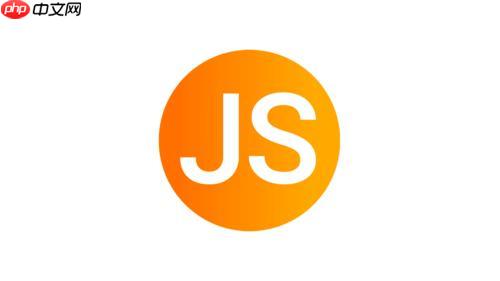防抖函数的作用是确保事件在停止触发一段时间后才执行回调,避免频繁触发导致性能问题,1. 通过延迟执行并重新计时来减少函数调用次数;2. 适用于输入搜索、窗口调整等场景;3. 与节流的区别在于防抖只在停止触发后执行一次,而节流固定频率执行;4. 可通过添加leading和trailing选项优化;5. 测试时需验证延迟执行、多次触发只执行一次、leading和trailing行为是否正确,最终提升性能并保障用户体验。

防抖函数的作用是在事件被触发后,延迟一段时间执行回调,如果在延迟时间内再次被触发,则重新计时。简单来说,就是确保事件在停止触发一段时间后才执行。
function debounce(func, delay) { let timeoutId; return function(...args) { const context = this; // 保持上下文 clearTimeout(timeoutId); timeoutId = setTimeout(() => { func.apply(context, args); }, delay); }; } // 示例 function handleinput(e) { console.log('Input value:', e.target.value); } const debouncedInputHandler = debounce(handleInput, 300); // 延迟 300 毫秒 // 在 input 元素上使用 // <input type="text" oninput="debouncedInputHandler(event)">
为什么需要防抖函数?
在某些场景下,事件会被频繁触发,例如
input
事件、
scroll
事件等。如果每次触发都执行回调,可能会导致性能问题,甚至卡顿。防抖函数可以有效地减少回调执行的次数,提高性能。 想象一下,你在搜索框输入内容,每次输入都立即发起搜索请求,服务器压力会很大。使用防抖,可以只在用户停止输入一段时间后才发起请求。
防抖函数与节流函数的区别是什么?
防抖和节流都是为了限制函数执行频率,但它们的实现方式不同。防抖是延迟执行,只在事件停止触发一段时间后才执行一次。而节流是控制函数执行的频率,保证在一定时间内只执行一次。 它们的应用场景也不同。防抖适合用于输入框搜索、窗口大小调整等场景,而节流适合用于滚动事件、鼠标移动事件等场景。 曾经我遇到一个问题,滚动事件导致页面频繁计算元素位置,造成页面卡顿。后来我使用了节流函数,将计算频率限制在每 100 毫秒一次,问题就解决了。
如何优化防抖函数?
可以考虑添加 leading 和 trailing 选项。leading 选项表示是否在延迟开始前立即执行一次回调,trailing 选项表示是否在延迟结束后执行一次回调。默认情况下,只会在延迟结束后执行一次回调。
function debounce(func, delay, options = { leading: false, trailing: true }) { let timeoutId; let lastArgs; let lastThis; const { leading, trailing } = options; function invokeFunc(time) { timeoutId = null; if (lastArgs) { func.apply(lastThis, lastArgs); lastArgs = lastThis = null; } } return function(...args) { lastArgs = args; lastThis = this; if (!timeoutId) { if (leading) { func.apply(this, args); } timeoutId = setTimeout(invokeFunc, delay); } else { clearTimeout(timeoutId); timeoutId = setTimeout(invokeFunc, delay); } }; }
如何测试防抖函数?
可以使用 Jest 或 Mocha 等测试框架来测试防抖函数。 测试用例应该覆盖以下几种情况:
- 事件在延迟时间内被多次触发,回调只执行一次。
- 事件在延迟时间内没有被再次触发,回调在延迟结束后执行。
- leading 选项为 true 时,回调在延迟开始前立即执行一次。
- trailing 选项为 false 时,回调只在延迟开始前执行一次。
// 示例 Jest 测试用例 describe('debounce', () => { jest.useFakeTimers(); it('should call the function after the delay', () => { const func = jest.fn(); const debouncedFunc = debounce(func, 100); debouncedFunc(); expect(func).not.toHaveBeenCalled(); jest.advanceTimersByTime(100); expect(func).toHaveBeenCalledTimes(1); }); });


评论(已关闭)
评论已关闭